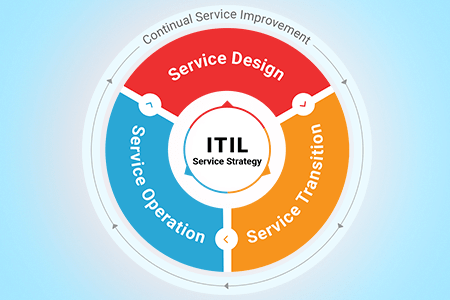Best ITIL ITSM Tools 2025
Consequently, the need has risen to develop strategies that enable organizations to have quality and organized computing systems. Itil ITSM tools are a significant part of these master plans.
But what is the difference between ITIL and ITSM, and why should you care about them?
How do they benefit your organization?
In this article, we'll talk about the difference between ITIL VS ITSM tools, the advantages of each one of them, and how they are beneficial to your company.
The Variation Between ITIL ITSM Tools
There are several acronyms in the IT world, and at times the terms can be puzzling. ITIL and ITSM are two crucial terms in the IT world that some organizations utilize daily. Generally, ITIL and ITSM are used synonymously.
Do they mean the same thing?
You guessed it. No. There's a considerable difference between ITIL and ITSM tools. To better recognize the difference between these two terms, you must define each term.

What Is ITSM?
In a nutshell, ITSM is an abbreviation of Information Technology Service management. It's a notion that refers to all processes, procedures, policies, and activities an organization performs to improve, implement, support, and design IT services.
It's a tactical approach to running IT ( Information Technology) in many organizations that deliver real value to their loyal customers.
How ITSM Benefit Organizations
Regardless of the size of an organization, each business requires Information technology service management in one way or the other. ITSM certifies that changes, problems, incidents, services requests, and It assets plus other IT services run smoothly.
Here's how successful ITSM processes benefit many organization's IT systems.
- Reduced IT operations costs
- Ensures a bit high returns on almost all IT investments
- Certifies little service outages
- Capability to develop repeatable, manageable, well-defined IT processes.
- Successful analysis of all IT issues to lower repeat incidents.
- Enhanced IT help desks efficiency
- Clear-cut responsibilities and roles
- Well- defined expectations on service availability and service levels.
- Secure implementation of all IT changes
- Superb transparency into IT services and processes.
ITIL Meaning
ITIL means Information Technology Infrastructure Library.
It's an ITSM structure. The tasks, procedures, and tasks in Itil are not specific to any organization and are incorporated with the companies' IT strategy.
ITIL framework is categorized into five sections. Each section covers a different ITSM circulation stage.
The said stages are;
- Service Strategy
- Service Design
- Service Transition
- Service Operation
- Continual Service Improvement
Each of these five sections offers extensive instructions for IT process management.
The technology world is changing quickly, and organizations should be agile and flexible to adapt fast when delivering vital IT services or risk lagging.
Businesses should set up a broad range of policies, activities, controls, and processes to warrant that IT remains an asset to the company. The customer's ever-expanding demands are satisfied in a more dignified manner.
Implementing ITIL has the potential to enhance IT service and solve many business and compliance issues. Many industries such as Disney, British Airways, Microsoft, Bank of Canada, and IRS regard ITIL highly and use it in their IT processes.
The significant benefits of implementing ITIL are;
1 Systems Integration
ITIL is highly compatible with some third-party project management systems, thus optimizing workflows, and enabling visibility and collaboration across several company teams.
2 High-Quality Service
ITIL involves service-level management and business relationships that offer visibility into customers' experience and the capability to control customer expectations by ensuring that IT services are easily accessible.
3 Change Management
ITIL processes offer a flexible environment that provides businesses with the capability to respond to changing needs without disrupting the services rapidly.
Change control is a significant part of IT compliance and allows documentation and tracking of all the activities. Change management is one of the main components for IT compliance and enables the tracking and documentation of all IT applications and systems' principal activities.
4 Enables Businesses to Respond Quickly To the Changing Technology
Technology is advancing rapidly today, and businesses must find a way to keep up with the trend to remain ahead of the pack or remain in the dark alone. ITIL processes enable the company to respond to the movement accordingly, stay ahead of the competition, and stay satisfied.
Final Thoughts - ITIL ITSM Tools
With digital transformation quickly shifting the world business's economic landscapes, organizations must strive to remain relevant and competitive by integrating ITIL ITSM tools.
How your business manages or delivers, its services can determine its survival. The world is a jungle, and that means survival for the fittest.
Enterprises should take advantage of new technology to guarantee their long time survival. Expanding and improving abilities in IT service management should be the name of the game.